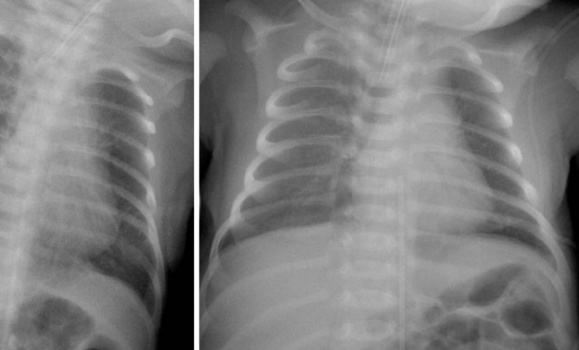Stories
» Go to news mainA multi institutional comparison of imaging dose and technique protocols for neonatal chest radiography

Dr. Kathleen O'Brien, Dr. Elena Tonkopi, and Dr. Mo Abdolell published research results from comparison of neonatal protocols. See full text.
Introduction
The focus on paediatric radiation dose reduction supports reevaluation of paediatric imaging protocols. This is particularly important in the neonates where chest radiographs are frequently requested to assess respiratory illness and line placement. This study aims to assess the impact of neonatal chest radiographic protocols on patient dose in four hospitals in different countries.
Methods
Exposure parameters, collimation, focus to skin distance (FSD) and radiation dose from 200 neonatal chest radiographs were registered prospectively. Inclusion criteria consisted of both premature and full-term neonates weighing between 1000 and 5000 g. Only data from the examinations meeting diagnostic criteria and approved for the clinical use were included. Radiation dose was assessed using dose area product (DAP).
Results
The lowest DAP value (4.58 mGy cm2) was recorded in the Norwegian hospital, employing a high kVp, low mAs protocol using a DR system. The Canadian hospital recorded the highest DAP (9.48), using lower kVp and higher mAs with a CR system, including the addition of a lateral projection. The difference in the mean DAP, weight, field of view (FOV) and kVp between the hospitals is statistically significant (p < 0.001).
Conclusion
Use of non-standardised imaging protocols in neonatal chest radiography results in differences in patient dose across hospitals included in the study. Using higher kVp, lower mAs and reducing the number of lateral projections to clinically relevant indications result in a lower DAP measured in the infant sample studied. Further studies to examine image quality based on exposure factors and added filtration are recommended.
Implications for practice
Reevaluation of paediatric imaging protocols presents an opportunity to reduce patient dose in a population with increased sensitivity to ionising radiation.
Recent News
- Dr. Abraham receives CAIR Award
- Thank you to everyone who joined us for the 30th anniversary Radiology Research Day on May 8th!
- Nova Scotia’s Lung Screening Program expanding to Cape Breton, eastern mainland
- Donor‑supported nuclear medicine technology attracts top medical talent to the QEII
- Building Critical Skills at the Dalhousie Physician Leadership Workshop for Women in Radiology
- CAR/CSTR Practice Guideline on CT Screening for Lung Cancer
- CAR/CSACI Practice Guidance for Contrast Media Hypersensitivity
- CAR Practice Guideline on Bone Mineral Densitometry Reporting: 2024 Update
